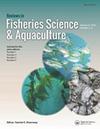Freshwater Flow and Fisheries Production in Estuarine and Coastal Systems: Where a Drop of Rain Is Not Lost
引用次数: 141
Abstract
This review presents a synopsis of the impacts of freshwater flow on fisheries production in estuarine and coastal systems, with particular emphasis on regional examples from eastern Australia and southern Africa. Freshwater flow impacts habitat availability, trophic interactions, and fishers’ harvesting behavior in estuarine and coastal systems. Seasonal and interannual variation in freshwater flow influences the distribution and abundance of fish and invertebrates through changes in growth, survival, and recruitment. Episodic flood and drought events have pronounced impacts on fisheries production due to rapid changes in physicochemical conditions modifying species richness and diversity. Many documented reductions in fisheries production have been attributed to river regulation modifying natural variation in freshwater flow. Protecting natural flow regimes is likely to be an effective management strategy to maintain the production of estuarine and coastal fisheries. Understanding the freshwater requirements of estuarine and coastal fisheries will become increasingly important as climate change modifies the hydrological cycle and as human population growth increases demand for water resources. One major challenge for scientists seeking to explore relationships between freshwater flow and fisheries production is to understand how variable flows influence resource availability, fishing activity, and the economic performance of commercial fisheries in estuarine and coastal systems.河口和海岸系统的淡水流动和渔业生产:一滴雨都不会损失
本审查概述了淡水流动对河口和沿海系统渔业生产的影响,特别强调了澳大利亚东部和南部非洲的区域实例。淡水流量影响河口和海岸系统的栖息地可用性、营养相互作用和渔民的捕捞行为。淡水流量的季节性和年际变化通过生长、生存和补充的变化影响鱼类和无脊椎动物的分布和丰度。由于物化条件的快速变化改变了物种丰富度和多样性,偶发性洪涝和干旱事件对渔业生产产生了显著影响。许多有记录的渔业产量减少归因于河流调节改变了淡水流量的自然变化。保护自然水流可能是维持河口和沿海渔业生产的有效管理战略。随着气候变化改变了水文循环,人口增长增加了对水资源的需求,了解河口和沿海渔业对淡水的需求将变得越来越重要。科学家们在探索淡水流量和渔业生产之间的关系时面临的一个主要挑战是了解可变流量如何影响河口和沿海系统的资源可用性、捕鱼活动和商业渔业的经济绩效。
本文章由计算机程序翻译,如有差异,请以英文原文为准。
求助全文
约1分钟内获得全文
求助全文

 求助内容:
求助内容: 应助结果提醒方式:
应助结果提醒方式:


